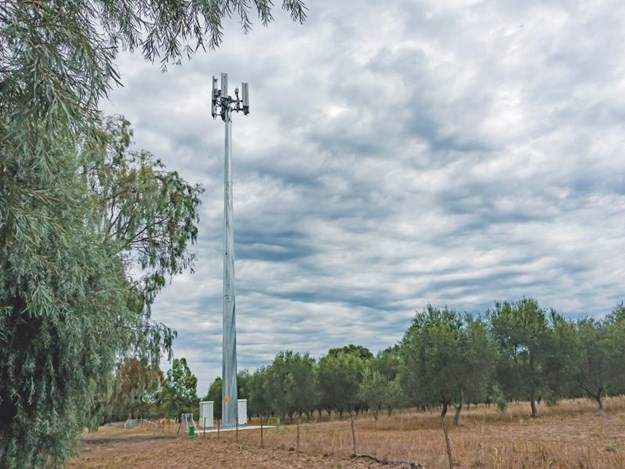Australia needs more than just GPS coverage and 4G to the farmhouse to fully assess the potential of new ag tech says WA Farmers CEO.
 |
|
5G towers are needed to cover machinery dealerships, grain receival points, sale yards and meat and grain processing facilities
|
Australia needs more than just GPS coverage and 4G to the farmhouse to fully assess the potential of new ag tech. We need 4G to at least 95 per cent of each and every farm if we are to have any hope of keeping up with the rest of the world.
In a country that had a total federal budget in 2019-20 of $505 billion and which has spent $51 billion on the NBN over the past decade, it is staggering that we have only managed to allocate $500m in five years to improve regional mobile coverage.
This failure is caused by a political focus that has targeted the vast majority telecommunications funding to the NBN in the race to build a network capable of providing metropolitan residents with HD Netflix to the living room while the farms have been left communicating with the back paddock using CB radio tech from the ’70s.
When government is confronted with complaints from farmers about mobile coverage, they are constantly told about the impending roll out of the latest mobile black spots program and that more funding is on its way.
But a review of past rounds shows that since 2015, the federal government has spent just $360m to kickstart the building of 1,229 base stations at a total cost, with private sector involvement, of $836m. This comes out at $680,000 a base station.
The latest announcement is an additional $160m to fund future rounds. Sounds promising until you work it out that it would fully fund just 235 mobile base stations — maybe enough to lift coverage to around 95 per cent of the WA grain belt.
Regional surveys show that mobile coverage across the entire farm is still commonly reported to be poor with too many of the existing towers operating on 3G, which lacks the data carrying capacity of 4G.
We know that the current network is focused on towns and roads which, having been established in the horse and cart days, are often situated at the bottom of the hill.
An analysis of farm boundaries to mobile network infrastructure found that 66.4 per cent of farms have infrastructure within 10km, 95.8 per cent within 30km and 98.4 per cent within 50km, but as we all know proximity to telecommunications infrastructure does not guarantee access, particularly when there’s a granite hill in the way.
At a national strategic level, there is no centralised independent knowledge of the gaps in the existing mobile network — either its data carrying capacity or the black spots at the individual hectare level. Without such basic information on data use and reach, how can connectivity for Australian producers be addressed and future proofed?
Before the government spends another dollar on black spots, the farming sector needs an independent organisation such as the Grains Research and Development Corporation or Agrifutures to undertake a comprehensive review of existing mobile coverage.
A simple app on every farmer’s phone to track the coverage around the paddock, clarifying which hectare has what level of data coverage and speed, would help map out where we need to be putting the next towers.
In addition to 95 per cent coverage of 4G across the entire Australian grain belt, we need 5G stations (which have a range of just 500m) in country towns to cover machinery dealerships, grain receival points, sale yards and meat and grain processing facilities. 5G is the future of big data and big data is the future of precision farming.
Our best estimate is that we need around a billion dollars today to lift coverage closer to the Holy Grail of 95 per cent. That money would double the number of regional towers across the broadacre grain growing regions.
Problem is, it’s increasingly difficult to entice carriers to invest in towers in places like outer Moree, Merredin or Mount Hope. Even if the federal government stumped up the funds, they would struggle to find telcos to provide even 50:50 matching funding.
These are the grain growing regions of big farms and few people that are increasingly seen as marginal business propositions for the telcos. The last round of blackspots funding failed to be fully subscribed.
The government needs to accept that it probably has to cover the full cost of towers to cover the back paddock. We should be looking to add another billion dollars to the NBN tab and build a government-owned network of 1,500 additional 4G towers to cover the marginal mobile blackspot areas and build a network of 5G stations to service our broadacre growers.
Only when we have meaningful mobile coverage will farmers be able to take full advantage of the latest precision ag technology and stay competitive in an ever-tougher international market.

